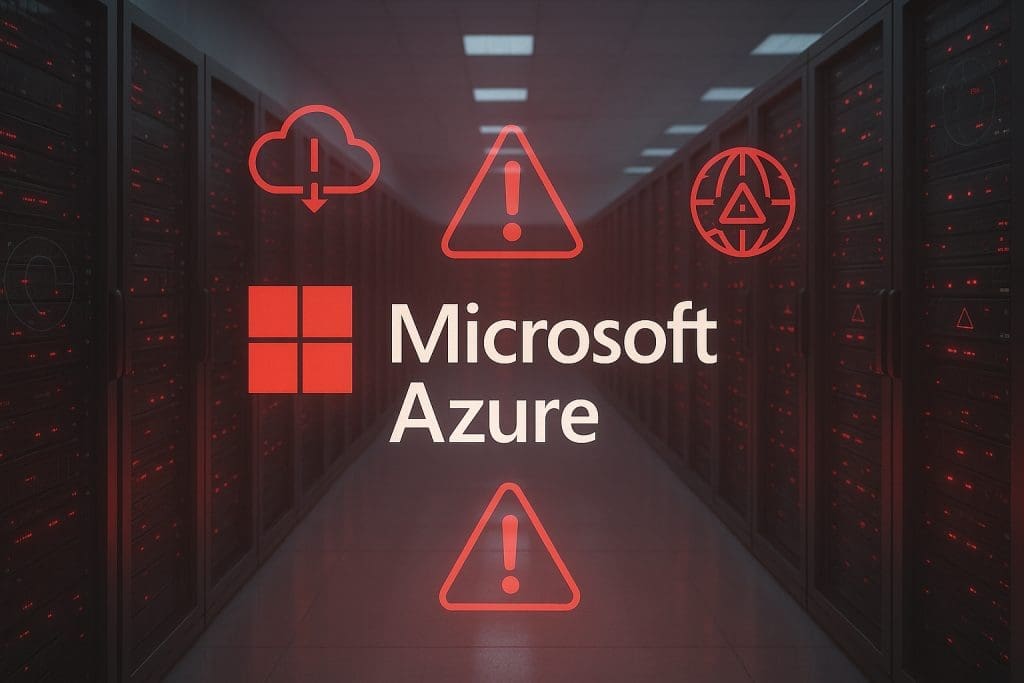Understanding AWS, Azure, and How to Protect Your Business Online
It’s been quite a few weeks for the cloud computing world. First, Amazon Web Services (AWS) — one of the internet’s biggest infrastructure providers — suffered a major outage on 20th September 2025. Then, just over a month later, Microsoft Azure followed suit with a widespread service disruption that affected millions of people and thousands of businesses worldwide.
For small businesses that rely on websites, online tools, and digital communication to stay connected with customers, these back-to-back incidents highlight something important: even the biggest names in technology can (and do) go offline. The question is — what can we learn from it?
At O’Brien Media, we believe resilience comes from understanding, preparation, and choosing the right partners. And while “the cloud” sounds abstract, what’s behind it is very real — and, as these outages show, occasionally fragile.
What are AWS and Azure, and why do they matter?
Amazon Web Services (AWS) and Microsoft Azure are two of the world’s largest cloud infrastructure providers. In simple terms, they run the servers, databases, and networking systems that power huge parts of the internet. Many popular websites, apps, and online tools don’t run on computers owned by the businesses themselves — they rent space, storage, and processing power from these cloud giants.
When you hear the term cloud computing, it means hosting and running digital services remotely — using shared servers located in large data centres rather than on a local machine or office server. It’s what allows small businesses to scale easily and pay only for what they use. But there’s a catch: when a major cloud platform experiences a fault, the impact spreads fast.
During these outages, everything from emails to online payments, gaming networks, and business websites became unavailable. Even large companies were left waiting for systems to come back online, highlighting just how dependent the digital economy has become on these unseen providers.
Why O’Brien Media stayed online
Unlike many services affected by these outages, our website hosting platforms stayed online throughout both events. That’s because we’ve made a conscious choice to stay closer to the people who manage our infrastructure.
We continue to work with smaller, independent UK-based providers who we know personally — and who know us. It’s a model that prioritises reliability and accountability over scale. Share on XIt’s always comforting to have the mobile numbers of the directors who oversee the data centres our servers run in. Even better, we know our servers are hosted across two separate UK locations, meaning we can switch between them in minutes, not hours, if there’s ever a problem. That human connection — combined with technical redundancy — gives us, and our clients, real peace of mind.
What small businesses can learn
It’s easy to assume that using a big-name provider means your service will never go down, but these outages prove that no platform is immune. Here’s what every business owner should take away from the events of recent weeks:
- Even the biggest clouds can have storms. Both AWS and Azure are world leaders, yet both went offline within weeks of each other. The takeaway? Always have a plan B.
- Know where your website lives. Many business owners aren’t sure where their site is hosted or who manages it. Ask your provider — understanding your hosting setup helps you make smarter, faster decisions when something goes wrong.
- Redundancy saves the day. Having copies of your website, backups, and alternate hosting locations ensures your business can stay visible, even if one system fails.
- Communication builds trust. If your website ever does go offline, a quick, honest update to customers via email or social media can make all the difference.
Our recommendations
At O’Brien Media, we work with small and medium-sized businesses across the UK to help them prepare for digital challenges like these. Here’s what we recommend:
- Review your hosting and backup strategy. Know where your site is hosted, how often backups are taken, and how you’d restore your site if something went wrong.
- Consider multi-location resilience. Ask whether your host has servers in more than one location. If not, it might be time to consider a setup that can switch in minutes — not hours or days.
- Use uptime monitoring. Free and paid tools can notify you the moment your website becomes unavailable — so you’re the first to know, not your customers.
- Build relationships, not just services. Working with people you can call directly — not just an online ticket system — means faster action when it counts.
Looking ahead
The recent AWS and Azure outages are reminders that even the giants of the internet can falter. For small businesses, this doesn’t mean stepping away from modern technology — it means using it wisely, with a plan for the unexpected.
At O’Brien Media, we take pride in offering web hosting, support, and website management services that are as personal as they are professional. Our goal is to make sure your business stays visible, secure, and supported — no matter what’s happening in the wider digital world.
Ready to make your website more resilient? Get in touch. We’re here to help you build an online presence that doesn’t just look great but stands strong — even when the cloud wobbles.
